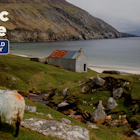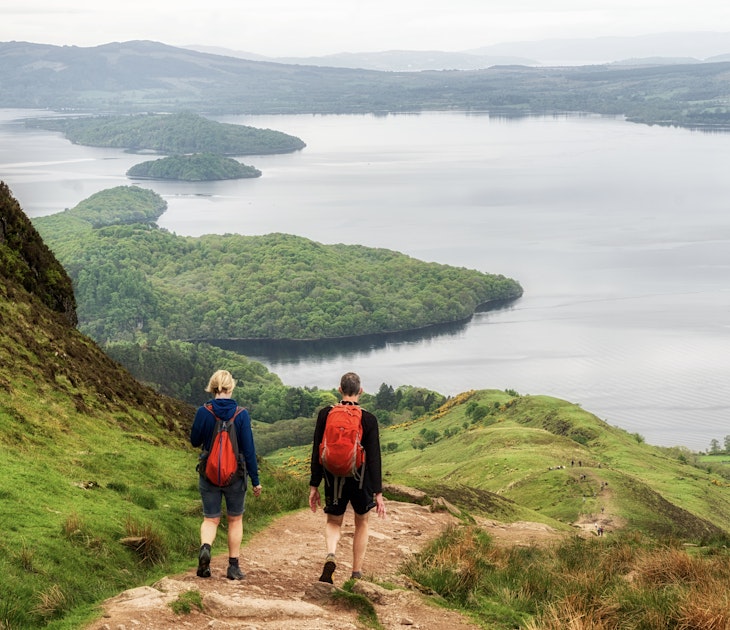
Meet the parents homeschooling their kids while travelling the world
Jan 25, 2020 • 7 min read

Travel doesn’t have to stop after having kids. These globetrotting parents are seeing the world and homeschooling their children at the same time.

British lifestyle photographer Kirsty Larmour and her Irish husband Tommy have two children, Saffy (13) and Indy (11). The couple met while working in Hong Kong and their children have been travelling their whole lives.
Their journeys have included a one-year road trip that saw them drive the family car from their base in Abu Dhabi to Ireland and back; they also moved to India, where they've spent the last two years. Now, the family are spending a year driving their van all the way back to the UK.
“We figured it’s our last time to take off and do something different before the girls need to think a bit more seriously about their studies and where and what they want to do with their own lives,” says Kirsty.

Finding the right school
Kirsty and her husband took on the role of homeschooling while Saffy and Indy were of primary age, but acknowledge it would be more difficult to do so at secondary level.
Their focus was on finding a homeschooling system that would work for their needs, which meant no lessons at a fixed time because they couldn’t always rely on the internet while on the road. Their solution was to enrol the girls at Wolsey Hall Oxford, a homeschooling college.
“Wolsey Hall has a system of units and assignments which the children follow, and they get released to them through on online system. They have regular contact and feedback from tutors and video calls to discuss any problems and to review progress,” explains Kirsty. “At age 13 and 11, the children can mostly manage this all themselves but parents also get access to the system so that we are kept informed too.”
Read more: How travel can help students perform better in school
The girls study maths, English and science. These are core subjects they will need to take at GCSE level. Beyond that they’re free to take whatever subjects take their interest; Kirsty and her husband believe that child-led learning and following their own interests is more engaging. For example: one of their daughters chose to study India as part of her history curriculum and her learning has been strengthened by the family’s time in that country.
Typically, they like to do their schoolwork first thing after breakfast if they can.
“They spend much less time on schooling than if they were in school as they can focus without distractions,” Kirsty says. “They will often download anything that needs to be watched to view while driving – written work needs to be done while we’re stationary as we seem to drive on a lot of bumpy roads.
"If we have wi-fi and they need to submit an assignment, they’ll do that too, or follow up on any feedback. Video calls with tutors tend to happen in the evenings because of the time difference between India and the UK.”

Staying connected
Wolsey Hall’s Danielle Hilton agrees that connectivity can be an issue, but many families on the road get around this by downloading course materials ahead of time when they know they are likely to be without wi-fi for a long period. Other challenges can include keeping motivation when distractions arise.
“This is typical of any student but when families are travelling and encountering exciting and new experiences it can be a greater distraction, so they need to be a little stricter in setting aside time for their studies,” says Danielle. But there are also benefits: “The flexibility to study anytime and anywhere is often cited [as a benefit], as well as the option to be able to continue a stable education. We teach the Cambridge curriculum which is the same as in UK schools and means children can slot back into 'mainstream school' on their return should they wish.”
The Jacobis are another example of a voyaging family who have happily embraced homeschooling.
Katy Jacobi, from Ireland, met her husband Michael, who grew up in Germany, in 1996 and the couple have lived in eight countries together since. They have three children, Emily (17), Sophie (14) and Sean (13) and Michael’s job as a hotelier has brought them to varying destinations from Qatar to Latvia.
Read more: Learn a language while you watch Netflix with the help of this new tool
Since August last year the family is embarking on an extended trip to South America; a part of the world which had long been on their wish list. Discussions about such a trip had previously arisen, but the couple had held off on the idea due to various worries, mostly about money and education.
“This year, our eldest was approaching her last year of school and about to set out on her own independent journey so we felt this was the last chance for us to travel full time as a complete family,” Katy explains. Everyone was keen to experience something new, learn a new language and culture and create some memorable family moments.
The family started researching homeschooling by reading blogs and using Google to identify schools that offered programs suitable for their children’s needs. Factors such as a school’s ability to support each of their children at different stages of education, cost, and ease of access were all taken into account. Eventually they also decided on Wolsey Hall, as well as Interhigh, with whom Emily takes one subject.
Adapting to changing surroundings
The family's daily routine tends to change depending on what location they are in and what facilities are available. An ideal day starts early, around 7am, with a family or individual workout – AKA a PE lesson – depending on how everyone feels. Morning study leaves afternoons free for tours and experiences.
“The days when we move, there is usually no time to study but we can easily make up for that on the quiet days between trips,” says Katy. “We try to stick roughly with the usual school holiday schedule, but use the flexibility of homeschooling to take our breaks when it best suits us.”
She has found that some learning is done practically, for example history and geography comes to life in Peru while hiking the Andes and visiting various Inca ruins. IT learning, meanwhile, has come in the form of editing short movies and developing the family website. The family is also learning Spanish by immersion and had a family Spanish teacher three times a week in both Peru and Argentina.

Practical learning
Karen Binedell, whose three children – Sebastian (16), Aiden (14) and Ella (12) – are enrolled in an online college as the family volunteer their way around Europe, believes that homeschooling while travelling brings learning to life. Being on the move allowed the children to see many of the places they were learning about first-hand.
A normal day for the Binedells sees them waking up, packing the caravan beds away and taking turns to get dressed (the caravan’s space is limited) before having breakfast and beginning work.
Karen and her husband Warren will start on their volunteer projects immediately and most mornings the children begin the day with two to three hours homeschooling, making their way through a module, completing a quiz, working on an assignment or having a video call with their language tutors. After lunch, they will then join their parents and assist with whatever needs doing.
Read more: How learning Gaeilge in Ireland expanded more than my vocabulary
“In the past year they have learnt to drive tractors and articulating fork lifts, they have learnt how to operate power tools, they have assisted in removing and replacing a farmhouse roof and have learnt an enormous amount about permaculture, farming and looking after livestock,” Karen says.
She believes that organisation and flexibility are key when homeschooling whilst travelling.
“As you can probably imagine, there are plenty of exciting things to do and see and it's incredibly easy to get distracted. So, four to five mornings are set aside for schoolwork, these could include Saturdays and Sundays depending on our plans, and we try as much as possible to stick to that,” she says.
Her children love the fact that they have had the opportunity to travel extensively without feeling like they have fallen behind in terms of their studies. According to Karen, “they regularly get to put their language skills to use in the different countries we visit and have made friends at every stop.”
The Laramour and Jacobi children also clearly enjoy their non-traditional education experience. “I like being able to study when it suits me best and that it’s easy to catch up on a missed day unlike at real school. I love the field trips, especially Machu Picchu,” says 14-year-old Sophie Jacobi.
“I love that my classroom is the whole world, and that I’m constantly learning from books, from other people and from the countries we visit,” offers 11-year-old Indy Larmour.
Get inspired to travel everyday by signing up to our daily newsletter.
Explore related stories







 AttractionCoasts, Castles and Culture: Nine days on Ireland’s Wild Atlantic Way
AttractionCoasts, Castles and Culture: Nine days on Ireland’s Wild Atlantic WayMay 20, 2024 • 12 min read


